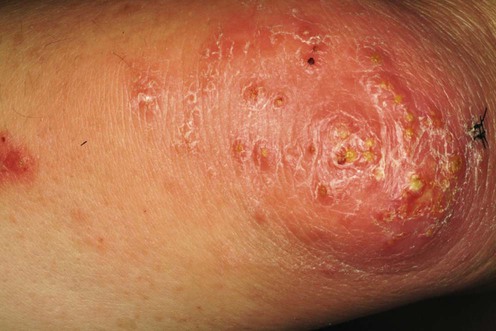 Oral rifampin daily at 10 mg/kg and streptomycin intramuscularly at 15 mg/kg daily for 4 to 12 weeks Oral rifampin daily at 10 mg/kg and streptomycin intramuscularly at 15 mg/kg daily for 4 to 12 weeks |
B |
 Wide surgical excision alone Wide surgical excision alone |
B |
 Wide surgical excision and rifampin 10 mg/kg daily and ciprofloxacin (250–500 mg twice daily) for 3 to 6 months Wide surgical excision and rifampin 10 mg/kg daily and ciprofloxacin (250–500 mg twice daily) for 3 to 6 months |
B |
 Rifampicin 10 mg/kg/day and clarithromycin 12–15 mg/kg od for 2 to 6 months ± adjunctive surgery Rifampicin 10 mg/kg/day and clarithromycin 12–15 mg/kg od for 2 to 6 months ± adjunctive surgery |
B |
 Rifampicin 10 mg/kg/day and moxifloxacin 400 mg od for 3 to 6 months and adjunctive surgery Rifampicin 10 mg/kg/day and moxifloxacin 400 mg od for 3 to 6 months and adjunctive surgery |
C |
 Ciprofloxacin 500 mg bd and clarithromycin 500 mg bd for 3 to 6 months and adjunctive surgery Ciprofloxacin 500 mg bd and clarithromycin 500 mg bd for 3 to 6 months and adjunctive surgery |
C |
 Rifampicin 10 mg/kg/day and ciprofloxacin 500 mg bd for 3 to 6 months Rifampicin 10 mg/kg/day and ciprofloxacin 500 mg bd for 3 to 6 months |
C |
 Local heat (40°C) Local heat (40°C) |
C |


